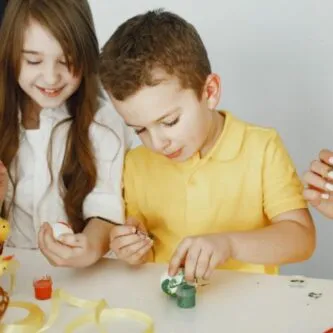
Small class programs are one of the most beneficial academic programs being offered by schools around the world. While there is nothing wrong with preferring a traditional classroom setup, small class programs can provide an environment that will help your child succeed in school.
Continue reading if you aren’t familiar with how a small class program can benefit your child.
Student engagement and participation is maximized
Many people don’t realize that the sheer size of a class can affect how engaged students can be. Try to picture a single teacher catering to 40 students in a single session. Just imagine how challenging it can be to connect to that many people and keep them engaged enough to learn properly. If your daughter needs extra attention to fully understand certain concepts and lessons, there may not be enough time and energy for a teacher to provide it.
Smaller class sizes mean teachers can ensure every student is involved and engaged in the learning process. No student gets left behind or overlooked. Fewer voices in class also mean more opportunities for students to participate and speak up. This benefits children who tend to be shy with their ideas and questions.
With a smaller class size, the teacher can also get to know each student as an individual — allowing him or her to cater to different needs and further work to their strengths.
Better relationships are fostered among students
Other than better teacher-student relationships, students also foster better relationships amongst each other in a smaller class. A large amount of students in a given class often means the formation of cliques and selective groups of friends. While there is nothing inherently wrong with this, it can lead to students potentially feeling left-out.
There are less chances of this happening in a small class program. Since there are less students, everyone will have the opportunity to work and get to know one another. The resulting relationships from this kind of set-up can prove to be deep and long-lasting. This can also have an added academic benefit because students in a small class program can be more open to helping each other on group tasks and homework.
There are less distractions
Distractions are often the reason why students’ attentions are diverted or teachers lose their train of thought while discussing a lesson. Another thing to note is that these classroom distractions often come from the students themselves. It can come in the form of noisy seatmates or a particular student behaving rowdily during classroom activities.
Whatever the case may be, it is only natural that distractions are minimized in a small class program because there are less students that can cause them. Fewer students also mean a better implementation of discipline and keeping noise in check.
All this culminates in more productive classes and a more focused classroom.
Key Takeaway
Small class programs are advantageous, but that doesn’t mean every child should be in one. Both have their own advantages and disadvantages that students can benefit from. It all depends on the specific circumstances of your child. For example, a small class program can help your child transition and succeed in a bigger class setting when the time comes (e.g. college or a different school). This is why it is important to choose an academic institution that offers both regular and smaller-sized class programs.






-logo.png)



